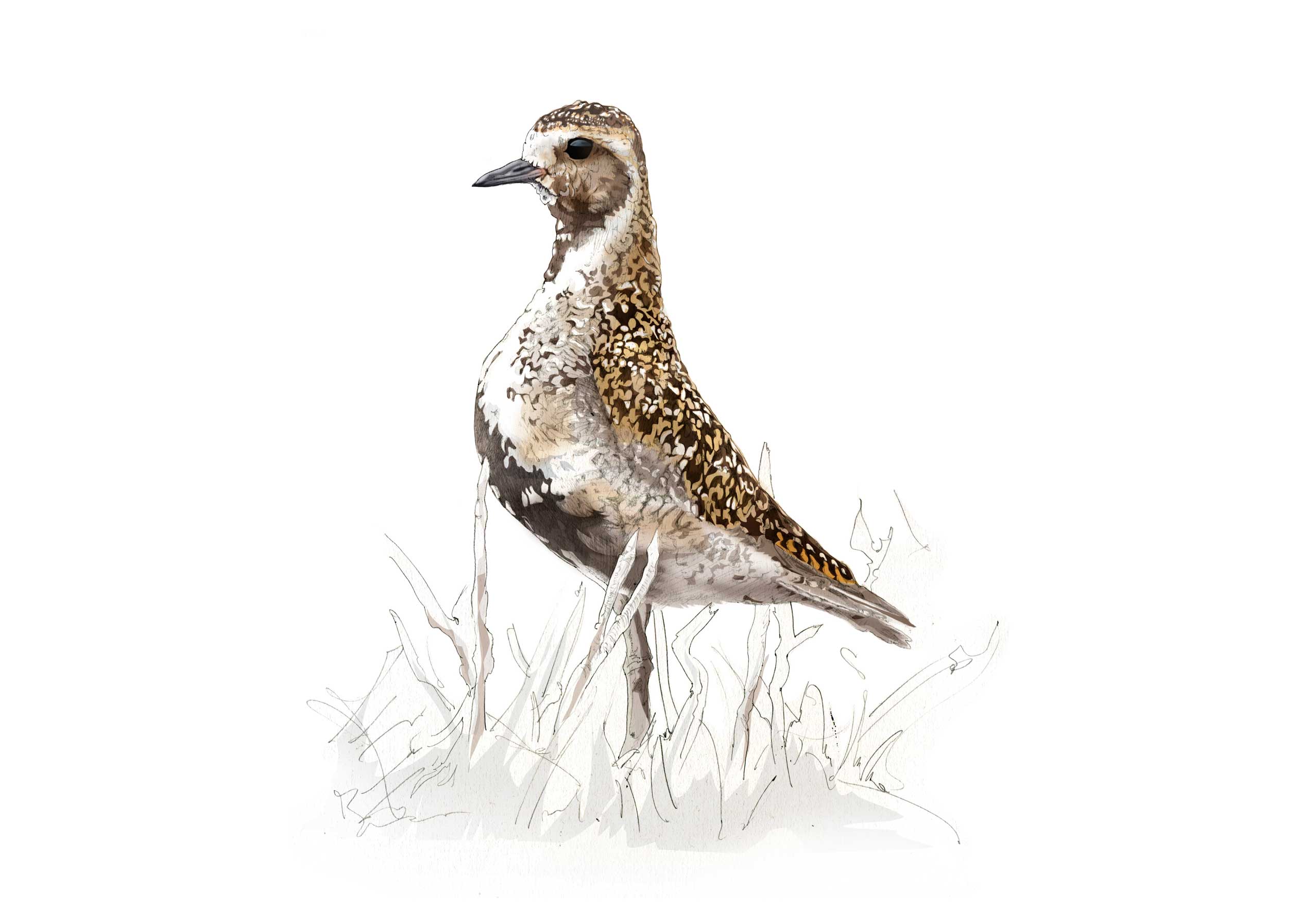
Pluvialis squatarola
Moorland, farmland, grassland, estuaries.
The golden plover is a medium sized wading bird with golden speckled feathers on its back. During the breeding season (spring and summer) adults turn black on their belly and neck. When the golden plover is in flight, look for white ‘armpits’. The main call is a clear, sad sounding whistle, often just one note. The song is a more repetitive ‘tirr-pee-poo’ sound.
Golden plover spend the spring and summer on the high moors and then fly down to lowland grassland, farmland or sheltered coasts for the winter. Many more golden plover from Iceland and northern Europe spend the winter in Britain. Golden plover mainly eat insects and their larvae, worms and spiders, and a small amount of grass seeds and berries. During the breeding season a pair of golden plover makes a nest on the ground amongst heather, twigs or grass. They prefer open ground, where the vegetation is not too tall, so they can see approaching predators. The female lays about 4 eggs in April or May and both parents help care for the chicks.
It has been estimated that there could be around 22,000 pairs of golden plover in Britain and that about 700 to 800 pairs nest on the moors. The North York Moors National Park is therefore an internationally important habitat for these birds and because of this it has been designated as a 'Special Protection Area'.
The National Park Authority, together with Natural England, helps farmers and land managers to look after the moors in a way which benefits golden plover and other birds and wildlife.
Like all ground-nesting birds on the moors, golden plover chicks are easily disturbed by people and dogs. You can help by keeping your dog on a lead and avoiding getting too close to nest sites.